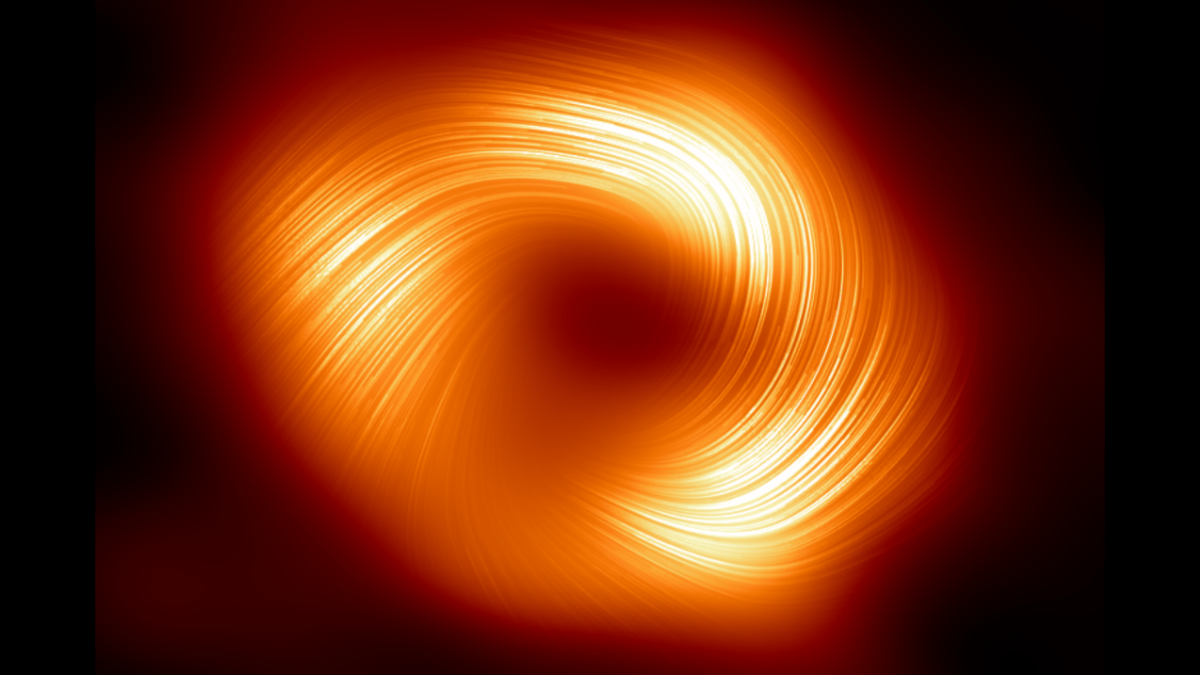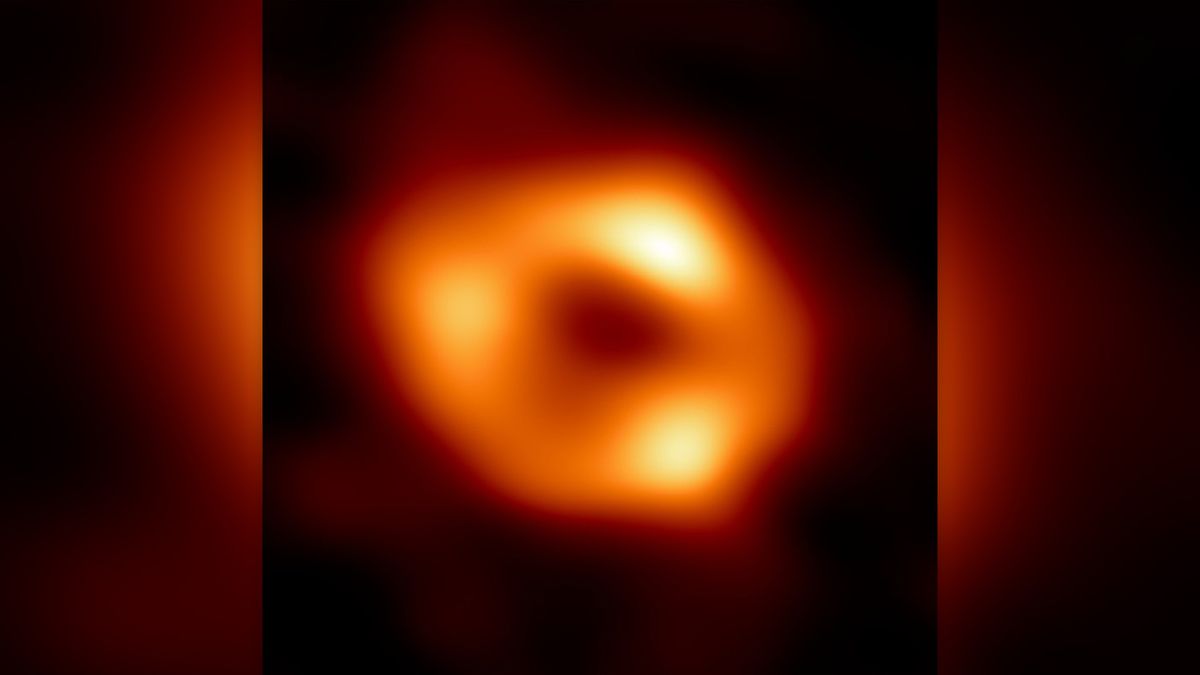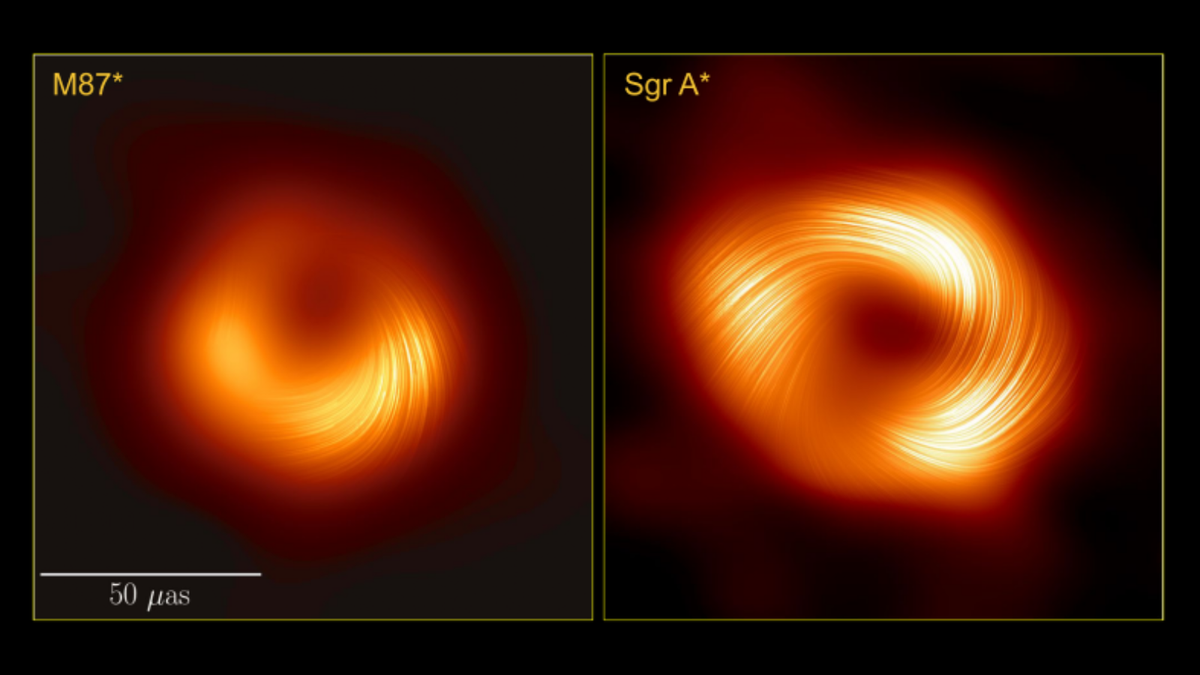The Magnetism of our Supermassive Black Hole Revealed in this Stunning Image
Follow us on Google News (click on ☆)

The supermassive black hole at the heart of the Milky Way, Sgr A*, seen in polarized light for the first time.
Credit: EHT Collaboration
This discovery suggests that strong and well-organized magnetic fields could be a common feature among all black holes, offering new insights into how these celestial objects interact with their surroundings, particularly in the process of accreting and ejecting matter in the form of powerful jets.
What's particularly intriguing is the indication that Sgr A* might also possess its own jet, although it has so far remained hidden from our observation.

An image of Sagittarius A*, the supermassive black hole at the heart of the Milky Way, taken using the Event Horizon Telescope.
Credit: EHT Collaboration
In 2017, the EHT already made history by capturing the first image of a black hole, M87*, located about 53.5 million light-years from Earth. Later, in 2019, the EHT revealed an image of the polarized light around M87*, thus allowing scientists to "see" the magnetic fields surrounding a black hole for the first time.
In 2022, the EHT managed to capture an image of the black hole Sgr A*, much closer to Earth but also smaller and less massive, located only 27,000 light-years away.
Polarized light informs us on the magnetic fields, gas properties, and mechanisms occurring when a black hole feeds. Despite the challenges associated with imaging Sgr A* due to its smaller size, this success paves the way for a direct comparison between the magnetic fields of two supermassive black holes at the opposite ends of the mass spectrum, revealing remarkable similarities.

(Left) The black hole at the heart of M87 seen in polarized light.
(Right) Sgr A* in polarized light showing similarities with the much more massive M87*.
Credit: EHT Collaboration
The resemblance between the magnetic fields of M87* and Sgr A* raises the possibility that our own supermassive black hole might be hiding a jet so far unobserved. This discovery could not only unveil hidden aspects of Sgr A* but also influence our understanding of the Milky Way's evolution.

This image shows the jet in the galaxy M87 in polarized light, captured by ALMA. The image reveals the magnetic field structure along the jet.
Credit: ALMA (ESO/NAOJ/NRAO), Goddi et al.
The next observation campaign of the EHT, set to start in April 2024, aims at obtaining multicolored views of familiar black holes like M87* and Sgr A* by observing in different light frequencies. This advancement promises to significantly enhance our understanding of the most energetic mechanisms in the universe, impacting the heart of galaxies and their evolution.